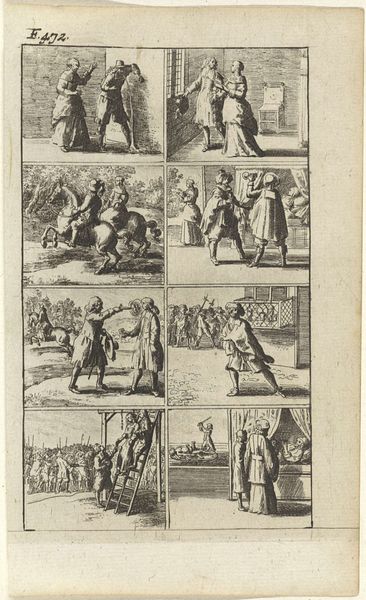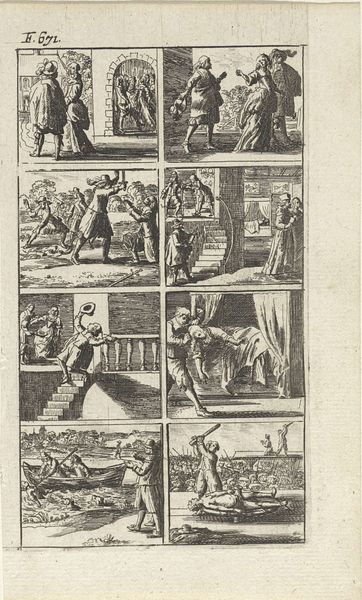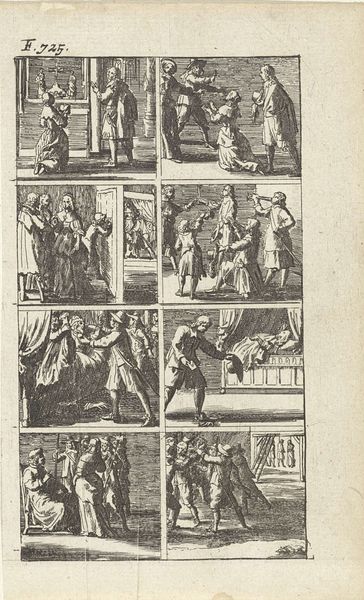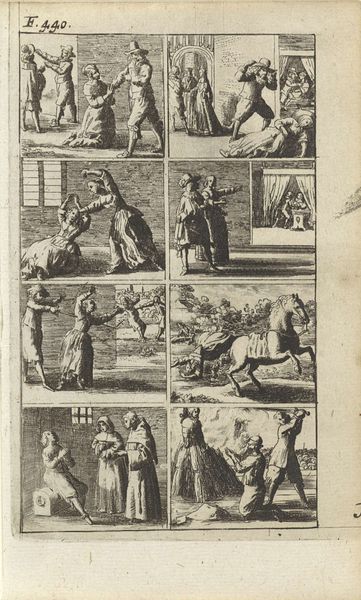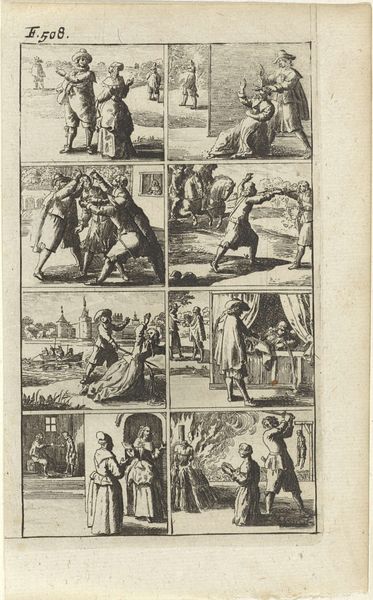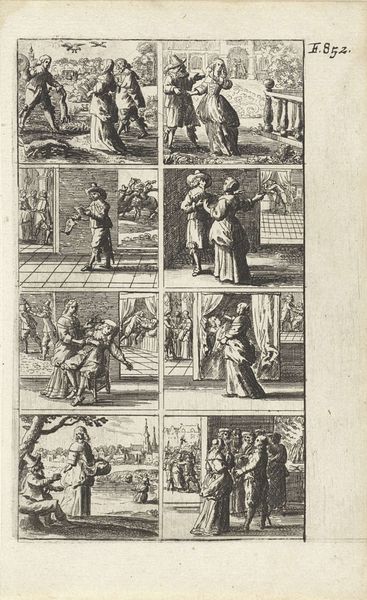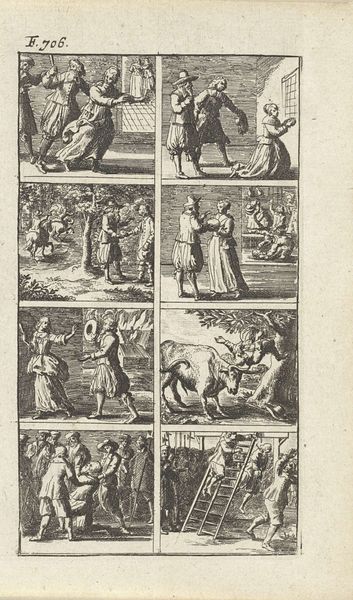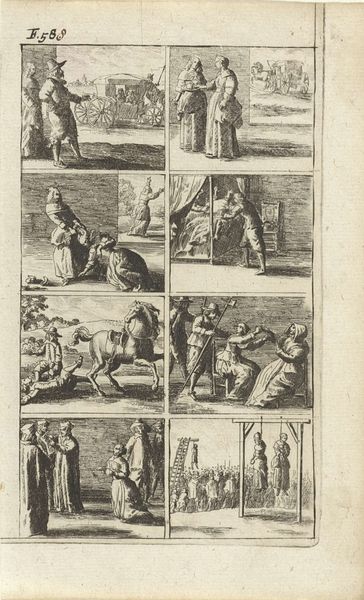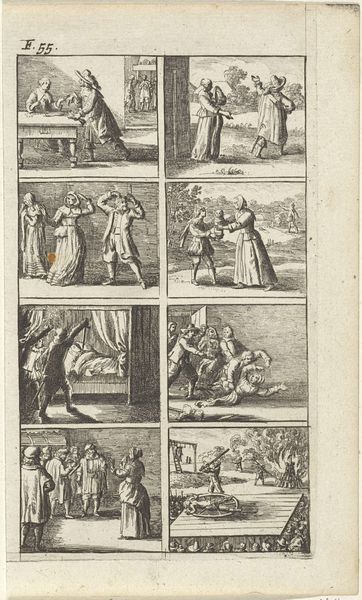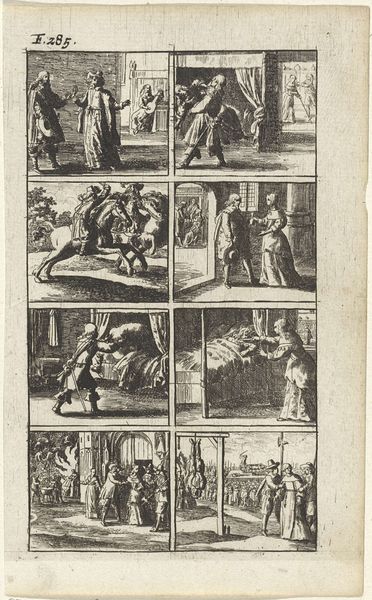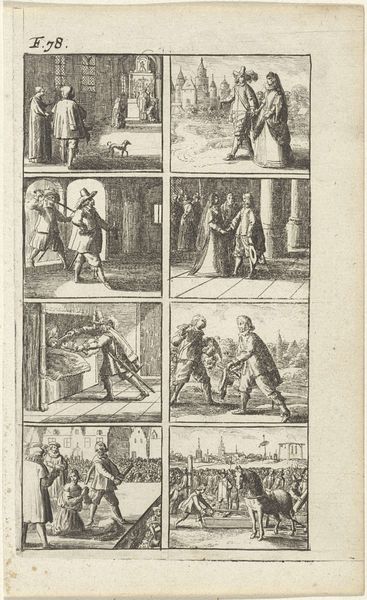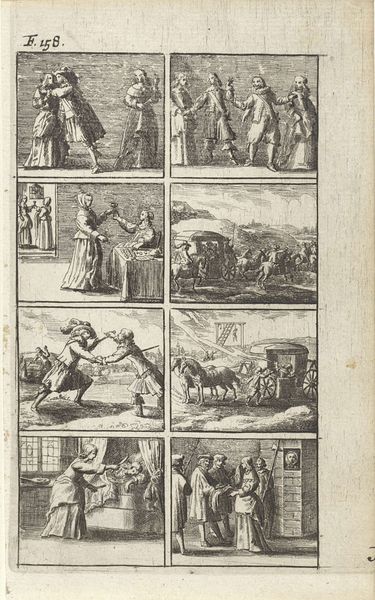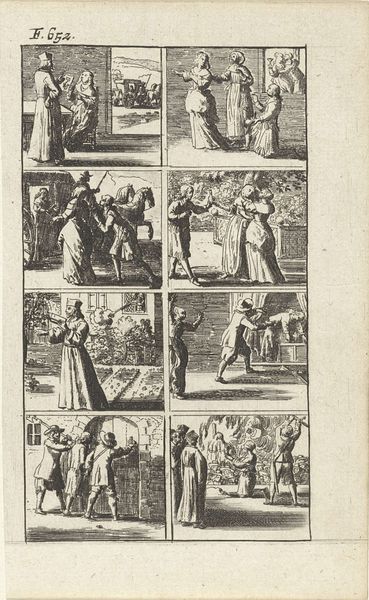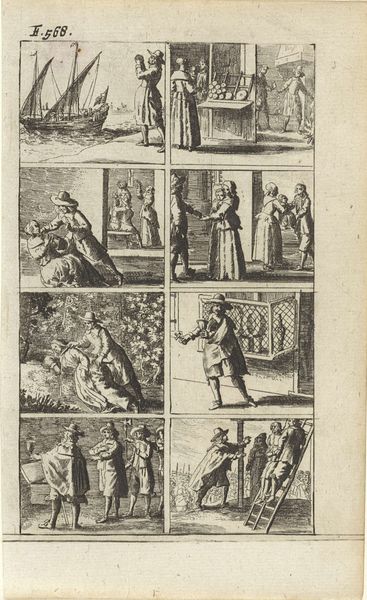
Verhaal met voorstellingen van moord en doodstraf (F. 542.) 1667
0:00
0:00
abrahamdirckszsantvoort
Rijksmuseum
print, engraving
#
narrative-art
#
baroque
# print
#
figuration
#
line
#
history-painting
#
engraving
Dimensions: height 155 mm, width 95 mm
Copyright: Rijks Museum: Open Domain
Curator: At first glance, I see a series of narrative scenes, all meticulously rendered within individual frames. The linear quality almost feels like a comic strip from another era, stark and a bit grim. Editor: Indeed. What we're observing is a print titled "Verhaal met voorstellingen van moord en doodstraf (F. 542.)", created around 1667 by Abraham Dircksz. Santvoort. It depicts various scenes of murder and capital punishment. Think of it as a visual broadside reflecting the harsh realities and the public fascination with crime and punishment of the period. Curator: The composition is striking. It's arranged in a grid, yet within each miniature tableau, Santvoort has created dynamic tension through sharp contrasts. I'm particularly drawn to how the lines themselves seem to convey both the violence and the cold, systematic nature of justice. Editor: And let's not forget the baroque influence! The exaggerated gestures and dramatic scenarios that are so common in this type of work. It wasn't just about recording events; it was about engaging with public sensibilities. Prints like these circulated widely and served as both news and moral lessons. The content offered an interpretation of contemporary social behavior that can often serve as a reminder to be aware and cautious. Curator: It makes you wonder about the role these prints played in shaping public perception. Each frame functions as its own narrative, yet they all contribute to this larger statement about justice, retribution, and social control. It's quite striking how effective it is in conveying such potent stories using just a few lines and a tightly contained space. Editor: Absolutely. By framing and disseminating these scenes of extreme violence, these prints contributed to the normalization of brutal punishment as a tool for societal order. A stark reminder of the complex ways art interacts with social realities. Curator: So, in contemplating "Verhaal met voorstellingen van moord en doodstraf" it is difficult to escape the precision and formality inherent to the work, despite how the subject of its different framed narratives remains provocative and brutal. Editor: It pushes us to reconsider how the Baroque style could depict the state sanctioned performance of violent practices and their effect on society.
Comments
No comments
Be the first to comment and join the conversation on the ultimate creative platform.
